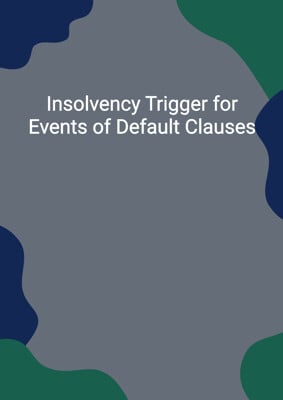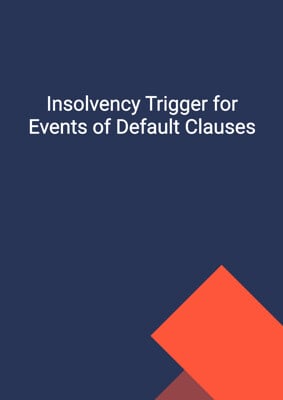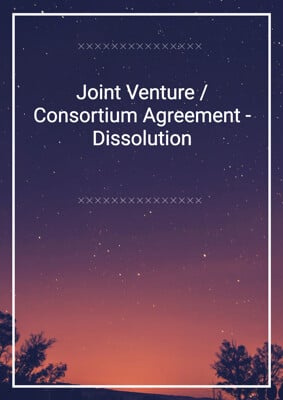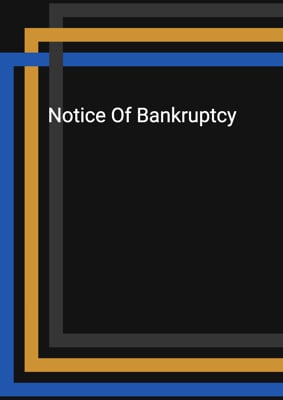How to Tailor the Document for Your Need?
01
Create Document
Click "Create Document" button and the document will be prepared with your account details automatically filled in.
02
Fill Information
Please fill in any additional information by following the step-by-step guide on the left hand side of the preview document and click the "Next" button.
03
Get Document
When you are done, click the "Get Document" button and you can download the document in Word or PDF format.
04
Review Document
Please review the document carefully and make any final modifications to ensure that the details are correct before publication / distribution.
Document Preview
Document Description
The document titled 'Insolvency Trigger for Events of Default Clauses' is of great importance in contractual agreements as it provides a clear definition and triggers for insolvency events of default. The document consists of two main sections: 'Insolvency' and 'Insolvency Proceedings'.
In the 'Insolvency' section, the document outlines various scenarios that would trigger an event of default related to insolvency. These scenarios include:
1.1.1. Inability to pay debts: If a member of the group is unable to pay its debts as they fall due or is deemed insolvent according to any applicable law, it would trigger an event of default.
1.1.2. Admission of inability to pay debts: If a member of the group admits its inability to pay its debts as they fall due, it would trigger an event of default.
1.1.3. Negative asset value: If the value of a member's assets is less than its liabilities, taking into account contingent and prospective liabilities, it would trigger an event of default.
1.1.4. Suspension of debt payments: If a member suspends making payments on any of its debts or announces an intention to do so, it would trigger an event of default.
1.1.5. Negotiations with creditors: If a member commences negotiations with one or more of its creditors to reschedule its indebtedness due to actual or anticipated financial difficulties, it would trigger an event of default.
1.1.6. Moratorium declaration: If a moratorium is declared in respect of any of a member's indebtedness, it would trigger an event of default. It's important to note that the ending of the moratorium itself will not remedy any event of default caused by the moratorium.
Moving on to the 'Insolvency Proceedings' section, the document covers various corporate actions, legal proceedings, and procedures that would trigger an event of default related to insolvency proceedings. These include:
1.2.1. Suspension of payments, winding-up, or dissolution: If any corporate action, legal proceeding, or other procedure is taken to suspend payments, impose a moratorium, wind-up, dissolve, or reorganize any member of the group, it would trigger an event of default.
1.2.2. Composition, assignment, or arrangement with creditors: If a composition, assignment, or arrangement is made with any creditor of any member of the group, it would trigger an event of default.
1.2.3. Appointment of insolvency officers: If a liquidator, trustee in bankruptcy, judicial custodian, compulsory manager, receiver, administrative receiver, administrator, or similar officer is appointed in respect of any member of the group or any of its assets, it would trigger an event of default.
1.2.4. Enforcement of security: If any security over any assets of any member of the group is enforced, it would trigger an event of default.
1.2.5. Winding-up, administration, or dissolution resolution: If a meeting is convened or a resolution is passed to wind-up, administer, or dissolve the relevant obligor, its directors, or its members, it would trigger an event of default.
1.2.6. Petition or application for winding-up, administration, or dissolution: If a petition or application is presented for the winding-up, administration, or dissolution of any member of the group, it would trigger an event of default.
1.2.7. Request or intention to appoint insolvency officers: If the directors or other officers of a member request the appointment of or give notice of their intention to appoint a liquidator, trustee in bankruptcy, judicial custodian, compulsory manager, receiver, administrative receiver, administrator, or similar officer, it would trigger an event of default.
1.2.8. Analogous procedures or steps: If any analogous procedure or step is taken in any jurisdiction, it would trigger an event of default.
In conclusion, the 'Insolvency Trigger for Events of Default Clauses' document is crucial in clearly defining and identifying events of default related to insolvency. It covers a wide range of scenarios and proceedings that would trigger such events, ensuring that both parties are aware of the potential risks and consequences.
How to use this document?
Guidance for using the 'Insolvency Trigger for Events of Default Clauses' document:
1. Enter the Contractor's and Customer's information: In the agreement, provide the necessary information for both parties, including their principal place of business. This ensures clear identification of the parties involved.
2. Specify the price and completion date: Clearly state the agreed price and completion date for the work to be carried out by the Contractor. This ensures that both parties are aware of the expectations and deadlines.
3. Describe the services: Provide a clear and detailed description of the type(s) of services to be provided by the Contractor. This ensures that both parties are aware of the scope of work and helps avoid any misunderstandings.
4. Agree on the length of warranty and time of payment: Both parties should agree on the length of the warranty and the time of payment after the completion of the work. This ensures that both parties are aware of the payment terms and the duration of the warranty.
5. Specify damages for non-completion: If the work is not completed by the agreed completion date, specify the amount of damages per week that the Customer is entitled to. This ensures that both parties are aware of the consequences of non-completion and provides a clear framework for addressing delays.
6. Review insolvency trigger clauses: Carefully review the 'Insolvency Trigger for Events of Default Clauses' section of the document. Understand the various scenarios and proceedings that would trigger an event of default related to insolvency. This knowledge will help both parties assess the potential risks and implications.
7. Seek legal advice if needed: If there are any uncertainties or complexities regarding the insolvency trigger clauses or any other aspects of the document, it is advisable to seek legal advice. A legal professional can provide guidance and ensure that the document aligns with legal requirements and best practices.
8. Regularly review and update the document: As circumstances may change over time, it is important to regularly review and update the document as necessary. This helps ensure that the agreement remains relevant and effective in addressing potential insolvency-related events of default.
By following these steps and considering the implications of the 'Insolvency Trigger for Events of Default Clauses' document, both parties can establish a clear and comprehensive agreement that addresses the risks associated with insolvency events of default.
Not the right document?
Don’t worry, we have thousands of documents for you to choose from:








